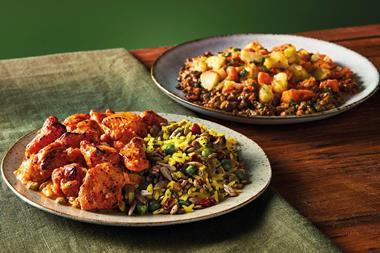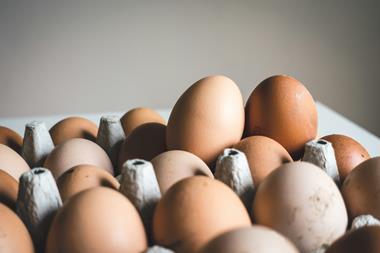
Focus On: Ice Cream by Ash O’Mahony
Publishing: 3 March
Advertising deadline: 19 February
Submissions deadline: 12 February
The Story
Shoppers are continuing to buy ice cream more frequently than last year and are paying more on average, with prices up 6%. Brands and own label have both upped their prices, justified through additional benefits like lower calories or premium, luxury products. Both extremes of the category are doing well – healthy options and indulgent ‘treats’, showing shoppers are buying ice creams for a variety of reasons. What are the key innovations driving the category forward, and where are opportunities for innovation being missed?
Key themes:
Health: Healthy choices are dictating dessert choices and driving growth. Being increasingly chosen as a healthy option is boosting ice cream’s growth in the declining desserts market – health is a factor in 8.3% of ice cream servings. Health benefits (such as protein ice cream) are being used to justify higher prices for the sector. How is health dictating shopping behaviour for the sector, and which brands are reaping the rewards?
Dairy-free: Several brands have focused on dairy-free ice cream in the past year. How has the category expanded, who are the main players and how are sales going for dairy-free ice cream?
The weather: Despite a decidedly wet summer last year, ice cream sales still skyrocketed up £45m from the previous year. What does this say about when and where consumers are eating ice cream? We look at indulgent NPD’s suited to at-home who continue to grow in value and volume.
Brands: Last year own label was growing at twice the rate of brands, but this year brands have fought back. How have brands turned themselves around? Luxury desserts are a significant factor here, where brands account for the majority of the segment’s value and growth year on year. Shoppers are buying luxury desserts more often and paying more on average than last year. Which key NPDs, marketing campaigns or pricing/promotional strategies have affected this?
Chocolate snacks: Ice creams defined as ‘chocolate snacks’, primarily chocolate coated ice cream sticks and ice cream versions of chocolate countlines are still the market’s biggest sector and are in strong growth. Which brands, own label manufacturers and retailers are driving this, and how are they are using factors like NPD, promotions and advertising to win sales?
Eating occasions: The key occasion for ice cream is still the evening meal, but there is an opportunity to get into more snacking occasions by targeting the afternoon snack, which is currently driving growth. Consumers are no longer choosing ice cream at the teatime occasion, which is counteracting growth seen at other occasions. How can brands and OL target the afternoon snack occasion and revitalise ice cream at teatime?
Kids: Children’s ice creams and lollies had strong growth in value and volume in the past year. Our data found that over half of all kids’ ice creams are actually eaten by adults.. Why are adults increasingly eating kids ice creams, and who has been driving growth and innovation for the sector this year?
Alcoholic ice creams: Alcoholic ice creams are a relatively new category for the sector. Will they prove to be a fad or have the public been receptive to them?
Solo consumption: Our data shows that for both total grocery and for ice cream, one person occasions are in growth as the sector successfully caters for the rising number of smaller households. Conversely, the ‘family dessert’ sector saw the biggest decline. What does this say about how/when ice cream is being eaten?
Innovations: We identify four new products or product ranges that have ideally not appeared in The Grocer before including image, launch date and RSP.
Key questions the feature is likely to address:
- What consumer trends have impacted the category over the past year?
- How have promotional strategies (both in terms of price and marketing) evolved?
- How have individual retailers’ strategies impacted the market?
- How has merchandising changed in the market?
- What impact has own-label had on branded players?
- What’s next for the category?



















No comments yet